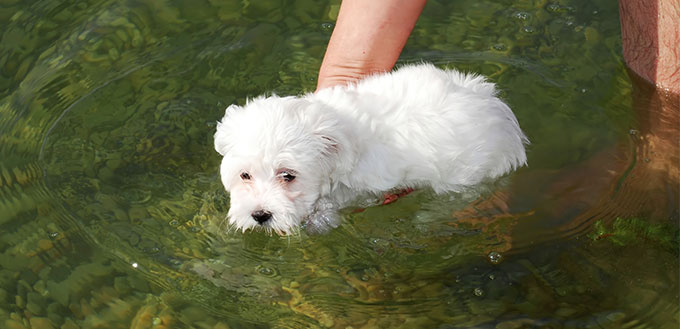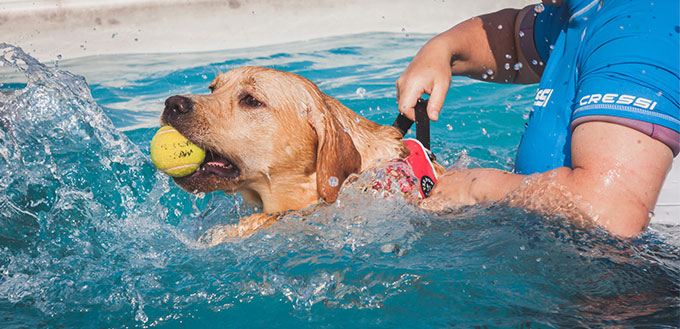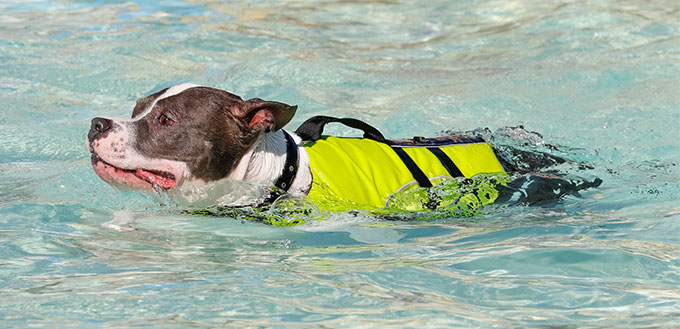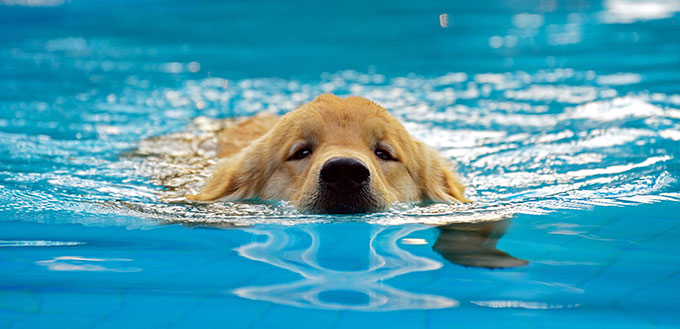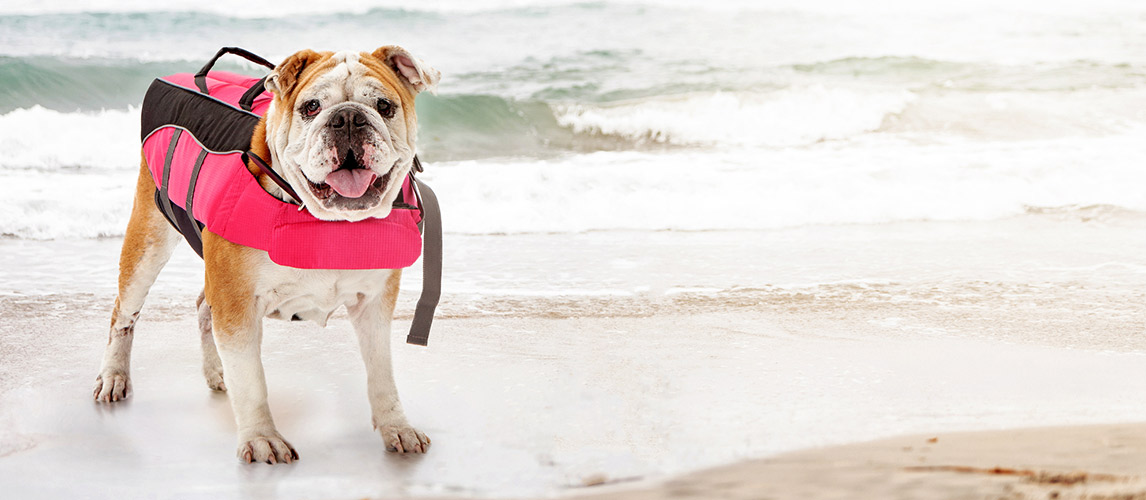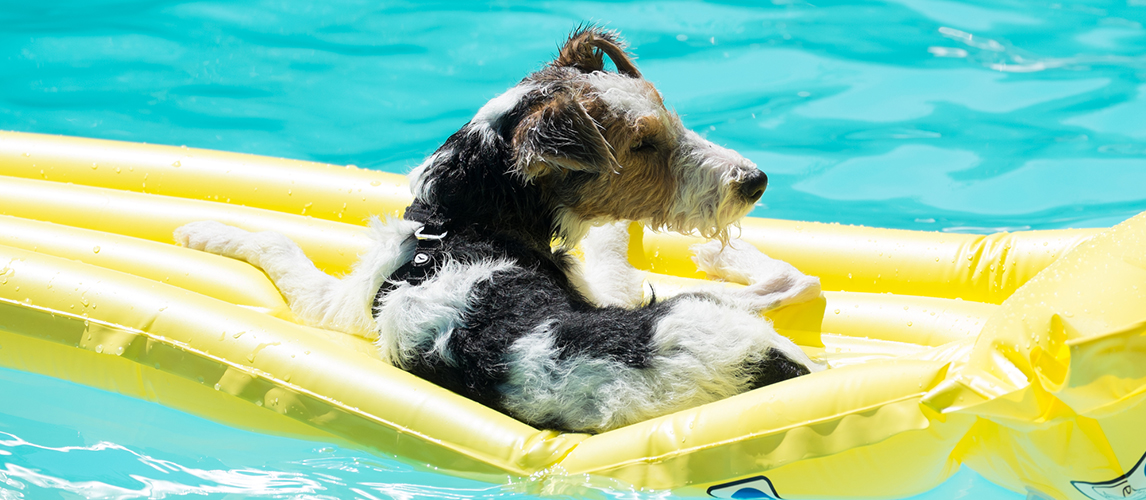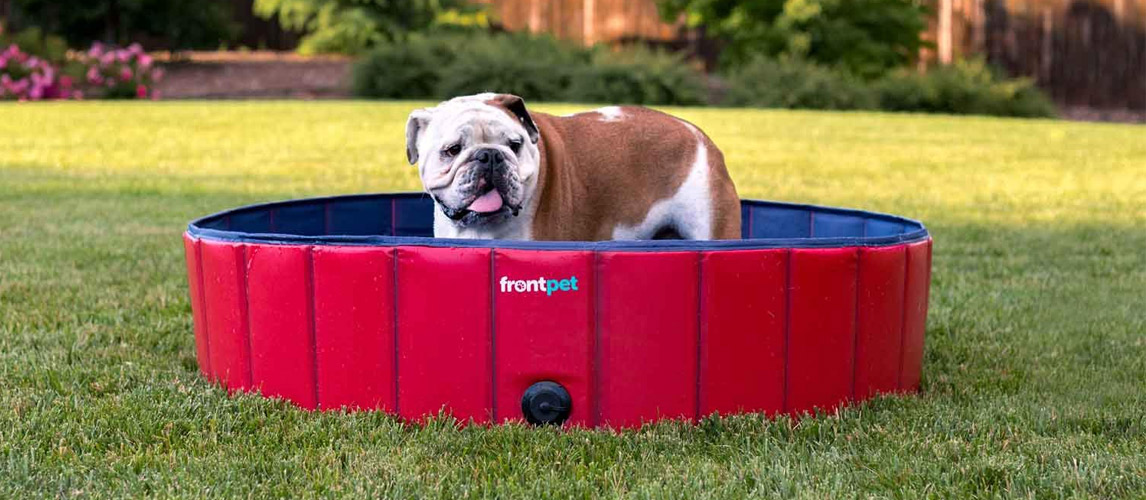Many people believe that all dogs love the water and have an in-born ability to swim. However, this is not actually the case! It is true that most dogs will be able to at least stay afloat using their own version of the dog paddle but some will actually sink and become very distressed. A dog that cannot swim is in the same danger as a human that cannot swim and so it is your duty as a responsible dog owner to make sure that they have the skills they need to stay safe around water. Read on to get the best tips on how to teach a dog to swim.
Is Your Dog a Natural Swimmer?
The breeds that are best at swimming are those that have been bred to leap into the water when their masters need them to. The obvious examples are the Retrievers and Labradors. These dogs are a medium size, have a double coat that is waterproof and webbing between their toes. They are very typically strong swimmers. Added to this are any dog that has the word ‘water’ in their name. On this list would be the Portuguese Water Dog, the Irish Water Spaniel and the American Water Spaniel. You may be surprised to learn that Newfoundland dogs are excellent swimmers despite their huge size. Finally, if you have a an English or Irish setter, a Schipperke or a standard Poodle, you are unlikely to need advice on how to get your dog to swim – they love water!
You are very likely to have to provide dog swimming lessons if you have a breed that has a large chest but small hindquarters because they are top heavy and not naturally buoyant. This applies to breeds like the Bulldogs, Boxers and Dachshunds. Also, the bracyaphilic breeds (such as the French Bull Dog and Pug) have very short legs and are poor swimmers. They also tire very quickly because they just can’t get enough oxygen in their bodies to keep going due to the unique shape of their respiratory system. Any small breed dog could struggle in cold water as they get both chilled and frightened easily. This leads to panic and potentially fatal results.
Does Your Dog Need a Life Jacket?
Before you even think about any water dog training, you need the right equipment and for many dogs this will include a flotation device or dog life jacket. Some breeds will need one even if you are in shallow water or near the shore.
However, all dogs should have one if you are heading out on a boat into deep water. Special dog life jackets are very lightweight and are easy to get on and off. They are designed to fit tightly around your dog’s body so that their head is held above the water. Your pooch should also be able to move around in it on dry land.
It would be a good idea to get your dog used to it before you start your ‘teaching dog to swim’ lessons. You don’t want to introduce too many new experiences at once! When they are happy to wear the life jacket, you can move on to the next stage.
Getting Your Pooch Used to the Water
Many dogs don’t go anywhere near water apart from the occasional bath so it is hardly surprising that they can get a little freaked out by a large expanse of water. Therefore, getting them used to the feeling of being in water should be a very gradual process. You will need to encourage your dog in a very calm and reassuring way as they build up confidence.
Don’t start by splashing around and never throw them into a river pool or into the sea. Your first few sessions should be in a shallow pool in a river or in a lake where the water is flowing slowly. The first step is to find out if your dog likes the water! This will be very clear right from the start! If your pooch heads enthusiastically into the pool, you can start teaching your dog to swim right away. If they stand on the shoreline looking worried, you will have to take some additional steps to help them get used to the water before you introduce the dog swimming lessons. Here are some ideas.
Related Post: Dog Pools
Get Into the Water Yourself
Weather and water temperature permitting, you could lead by example and get into the water yourself. Encourage your pooch to join you in the pool and give a lot of praise when they do. You may have to try several times if they are really reluctant. A tasty treat may also help!
Gradually Increase the Depth
Search for a river pool or lake that has a gradual change of depth. This will allow your pooch to get used to the feeling of water on their coat whilst all four paws are on the ground. Then you can coax them into the slightly deeper water using a ball or stick. You could also use a favorite toy. Try to get your dog to head out of their depth to retrieve the object and swim back to you. Give them loads of praise for being so brave!
You could always start off with a paddling pool in your own yard and then gradually progress to rivers and lakes.
Related Post: Dog Floats For Pool
Meet up With Doggy Pals
You could try meeting up with some pooch pals that love the water. As long as this is in a shallow pool where your pooch is in no danger and they are wearing a flotation device, they can have plenty of fun. They may forget their anxiety and head out into the water with their pals.
Stay close by and provide plenty of supervision and encouragement but be prepared to give up if it clearly isn’t working.
Build up Stamina
Learning to swim is hard physical exercise for many dogs. Their muscles, heart and lungs will need to be trained to cope with the extra workload.
You will need plenty of regular swimming sessions to do this but it is possible even for the breeds that are not naturally great swimmers. However, there are some breeds that may never be able to enjoy water without a life jacket because they will always tire very easily.
Teaching Your Dog to Swim Safely
Safety must always be your top priority when you are teaching your dog swimming. There some common sense precautions that you should take when you take dogs near water and are encouraging them to venture into the pool.
- Go somewhere quiet: When you first start introducing your pooch to water, choose a pool that is free from distractions. This will ensure that they concentrate on your instructions.
- Bring clean water: A river pool or the sea may be great for paddling or swimming but it is not suitable drinking water for dogs! Discourage your pooch from drinking pool and river water as it can cause stomach upsets and infections. Bring your own supply of clean drinking water and a travel bowl or receptacle that they can drink from.
- Keep your dog on a leash: In the early stages you should teach your dog to get used to the water whilst they are on a leash. This will stop them from swimming out too far in the pool and getting into trouble. You should keep your dog on a leash until you can be sure that they will come back as soon as you call them.
- Stay alert: Dogs in the water are their owner’s responsibility just as they are on dry land. Do not leave your dog unattended.
Swimming Lessons for Dogs
Once your four-legged friend is used to being in the water and is comfortable with standing in their depth, it is time to get them used to moving around. Using the leash, guide your dog for a short walk in shallow water. Perhaps make the transition from water to dry land and back again a few times so that they get used to the sensation. This reinforces the fact that your dog can get back out of the water if they want to. Many dogs find this very reassuring. It can be useful to have some tasty treats with you so that you can reward them when they follow you in and out of the water.
Keep giving your dog positive encouragement and carefully watch their body language. If they are clearly not happy, move into shallow water or perhaps back on the shore. If they are looking calm and confident and seem to be actually enjoying the experience, you could move your dog into deeper water.
You and your dog will reach a point where they can no longer touch the floor with their paws and your dog will need to start paddling. You can use your arm to provide both reassurance and practical support. Place your arm under your dog’s stomach and this will encourage them to use both their front and rear legs for swimming. It is important that your dog does not use just their front legs to swim as this will make them tired and reduce their stamina. Once you can see that your dog is using all four limbs to propel themselves in the water, you can reduce the support that you give them. Keep each swimming session quite short so that your dog does not get tired and start to panic. It is best to end the swimming lesson early and let your dog swim back to the shore themselves. This will build confidence further.
After the Swimming Lesson
At the end of each lesson, let your dog find their own way out of the pool and onto the shore. Give them a good rinse with fresh water and a nice drink. Give your pup loads of verbal praise for the effort they have put into the practice.
Finally, remember that it is not possible to teach every dog to swim! You may have to accept that swimming is not going to be your dog’s favorite activity and find something else to enjoy together.
Sources:
- How to Teach a Dog to Swim, PetMD


